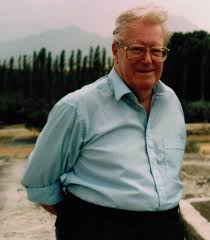The Train to Izmir

I’m sure you’ve been wondering why archaeologist James Mellaart, after three highly successful seasons excavating in Turkey at the neolithic settlement of Catalhoyuk in 1961 through 1963, was denied a permit to dig in 1964 and again in 1966.
Mellaart’s excavations at Catalhoyuk had unearthed a huge Stone Age city, with hundreds of houses, burials, and artifacts, including wall murals that represent the first known human art on a manmade surface.
Turkish authorities denied Mellaart’s permit because of his involvement in the Dorak affair, which has puzzled archaeologists, and the general public for more than half a century.
The story, in brief, goes like this: Mellart was on a train to Izmir when he saw a woman with a gold bracelet that any archaeologist worth his salt would identify as Bronze Age Anatolian craftsmanship.
He chatted her up, asked about the bracelet and she told him her family had a whole hoard of artifacts from the same period that had supposedly been excavated from Dorak, near Troy, when Greek troops occupied the area after World War I.
She gave her name as Anna Papastrati, and when she learned he was an eminent archaeologist, she invited him to the family home to see the artifacts, which included objects of gold, silver, lapis lazuli, amber, marble and obsidian.
There were scepters, bracelets, daggers, swords, ax heads and vessels, and a solid gold throne cover inscribed from the second pharoah of Egypt’s fifth dynasty. No horde of Bronze Age artifacts would be complete without one.
The pharoah’s gift was made to a ruler of the Yortan kingdom, which bordered Troy, of which nothing much is known.
Mellaart drew detailed sketches of all the objects, and published them, with a description of their provenance in the Illustrated London News.
So far, so good. But when Turkish authorities went to the address Mellaart had given, they found no trace of Anna Papastrati, or of her family, or, needless to say, of the treasure.
Not one of the objects described by Mellaart has turned up for sale anywhere in the world, as far as we know, and the Dorak affair remains a mystery to this day.
Some say Mellaart made up the whole story, but why would the most famous archaeologist of his day make up such a story, when it cost him his right to continue his excavations?
Some say he did it to cover up an affair with Anna Papastrati, but if so, he would have had to spend so much time sketching and researching that there would have been precious little time for any hanky-panky, if you know what I mean.
The explanation that appeals to me is that the treasure is real and in the possession of smugglers, who took advantage of Mellaart’s expertise to authenticate their artifacts, which were obviously much more valuable after the sketches appeared in the Illustrated London News.
Pretty clever when you think about it. Planting the woman on the train with a solid gold Bronze Age bracelet, counting on the famous archaeologist to recognize it. Luring him to a remote village to view the treasure, getting him to publish an article, and then scooting without leaving a trace.
Excavations at Catalhoyuk resumed in 1993 under the direction of Ian Hodder and Shahina Farid. Mellaart continued his career as a scholar and the author of numerous works on the ancient civilizations of Anatolia and the Near East.
I found this story in the May/June 2005 issue of Archaeology Odyssey magazine.
